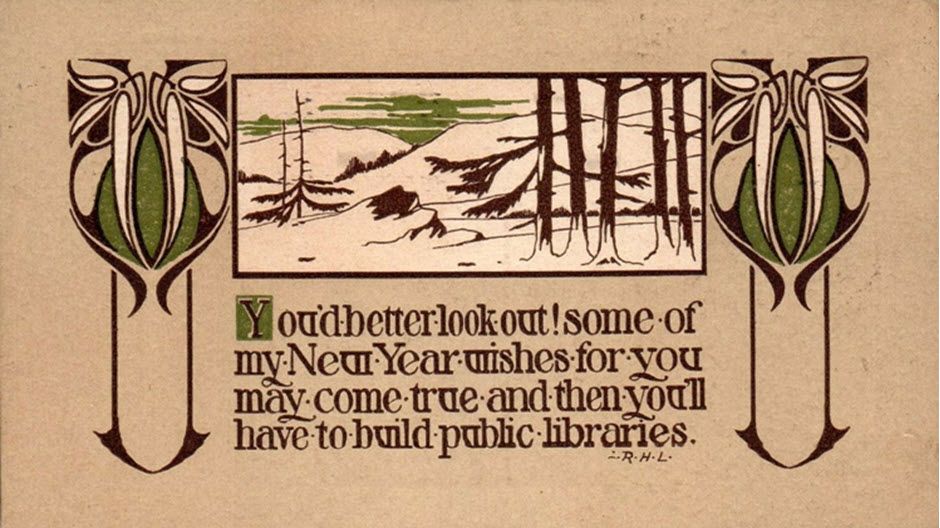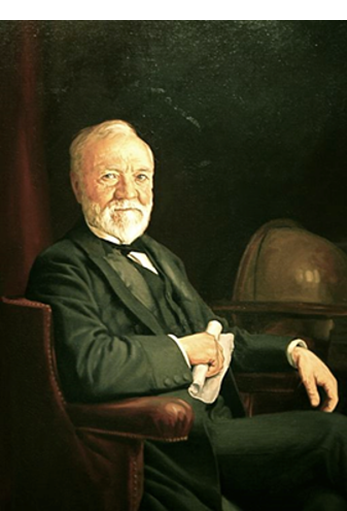A New Year’s Card, Decoded

Ephemera can embody something universal that immediately “speaks” to us across decades or centuries. On the other hand, some ephemera needs translation!
An example, spotted by ESA President Richard Sheaff, is this 1911 New Year’s postcard from the A. M. Davis Company of Boston. Its cheerfully archaic hand-lettering reads, “You’d better look out! Some of my New Year wishes for you may come true and then you’ll have to build PUBLIC LIBRARIES.”

These lines are mystifying unless you realize that, from the 1880s to the 1920s, the steel magnate Andrew Carnegie poured the equivalent of tens of billions of dollars into philanthropic endeavors, most notably the building of free community libraries. According to Wikipedia, Carnegie, a Scottish immigrant, located his first libraries in his hometown in Scotland and in steel towns around his headquarters, Pittsburgh. Then he branched out. By 1929, more than 2,500 Carnegie Libraries had been built in 14 countries, including nearly 1,700 in the U.S.
To ensure each new library remained a true community resource rather than a private, elitist institution, Carnegie provided construction funding but required the town itself to operate it. Innovations such as open (self-service) stacks and a large, commanding desk in front of the entrance/exit originated with the Carnegie Libraries. These measures kept the community’s costs down by allowing a single librarian to preside over the entire space and ensured no one stole books by evading check-out.
In 1911, few English-speaking American card buyers would have failed to see who was meant by the words, “Public Libraries” — the sender of the postcard was wishing the recipient Carnegie-like wealth in the New Year. The author of the lines, R. H. L. (Robert H. Lord), may have been the most prolific American creator of greeting-card sentiments of his time. His light, colloquial turns of phrase were featured on hundreds of Davis cards.
